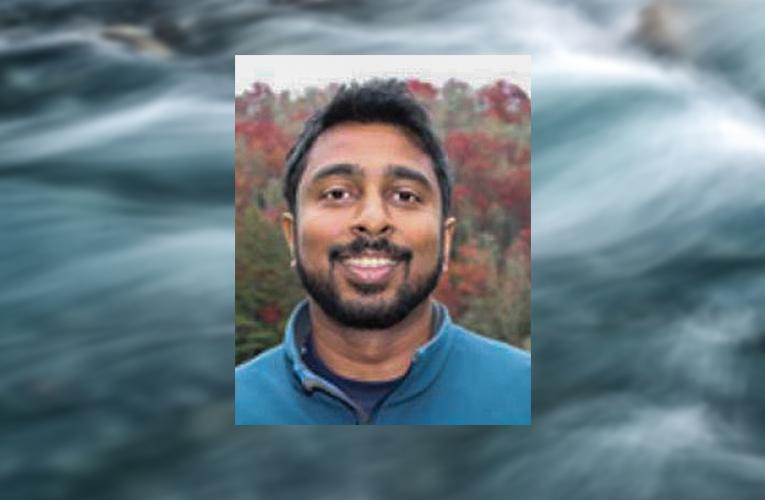Tim Lucas
(919) 613-8084
tdlucas@duke.edu
This is the last in a series of six stories from the NSOE’s inaugural faculty research symposium at the Duke Marine Lab in Beaufort on September 29th. Explore the rest of the series
DURHAM, N.C. – Shineng Hu, assistant professor of physical oceanography, is a climate scientist specializing in using observations, theory and climate models to better understand the relationship between global ocean and atmospheric movement, especially as that relationship indicates and informs climate change.
At the faculty research symposium in Beaufort, Hu gave an overview of his lab’s work, which focuses on the ocean’s role in affecting climate and society through its interaction with the atmosphere. A primary focus of this work, he said, is to decipher ocean inter-basin connections:
“What happens in the Indian Ocean can affect the Atlantic or Pacific Oceans through the atmosphere,” he explained. “In other words, the atmosphere can act like a bridge that connects two ocean basins that are divided by continents.”
Another important focus of their work is to understand why global warming is not spatially uniform.
A recent paper by Hu, Nicholas School PhD student Yiqun Tian, and Clara Deser of the National Center for Atmospheric Research analyzes observed sea-surface temperatures over the past century and finds that surface waters in the tropical Indian Ocean have grown significantly warmer than across the tropics as a whole.
Using single-forcing, large-ensemble coupled model simulations, Tian, Hu, and Deser demonstrate that this accelerated regional warming may be sparked by increased atmospheric discharges of biomass-burning aerosols in the region over recent decades—the result of more frequent and intense wildfires there, and an increase in agricultural burning.
The study, which was published in the journal Nature Communications this June, highlights the overlooked role biomass-burning aerosols plays in driving climate change, Hu said. Previous studies by other research groups have mostly focused on the impacts of greenhouse gases and industrial aerosols and have placed greater weight on globally averaged temperature than on regional patterns.
The increased temperature of the tropical Indian Ocean’s surface has measurable implications, Hu stressed.
“The biomass-burning aerosol-induced local rainfall changes over the tropical Indian Ocean and western Pacific can potentially lead to far-reaching impacts via global teleconnections through the atmosphere,” he said.
One example of this, reported in the paper, is that the North Atlantic jet stream has been significantly enhanced and pushed northward by the biomass burning aerosol change occurring far to its south. As it strengthens and slides northward, it transports more water vapor towards northwestern Europe, increasing rainfall over the British Isles and Scandinavia and reducing it over southern Europe and the Mediterranean.
Although his current research focuses on oceans and the climate, Hu began his academic career as an undergraduate at Peking University in Beijing, where he studied math and physics. After two years, however, he realized that while his studies were engaging, “this is not something that I can feel, I can touch, I can see.” So, he changed majors and began applying the physical laws he’d learned in those first two years toward a degree in atmospheric and oceanic sciences.
At Duke, much of his lab’s work is focused on understanding the mechanics of extreme climate or weather events, including blizzards, marine heatwaves and intense El Niños and how they are shaped by ocean-atmosphere interactions.
It’s a topic that is both intellectually engaging and deeply personal for Hu, whose hometown, Ningbo, is a coastal city south of Shanghai that sees a lot of typhoons in late summer, similar to what we see during the peak of hurricane season here in North Carolina.
“I still remember how shocked I was as a kid, seeing through the window the store billboards flying in the sky during severe typhoons,” he said. Understanding the forces that can trigger that sort of power, and how climate change is fueling them, is a fitting and important challenge, he said.
###



